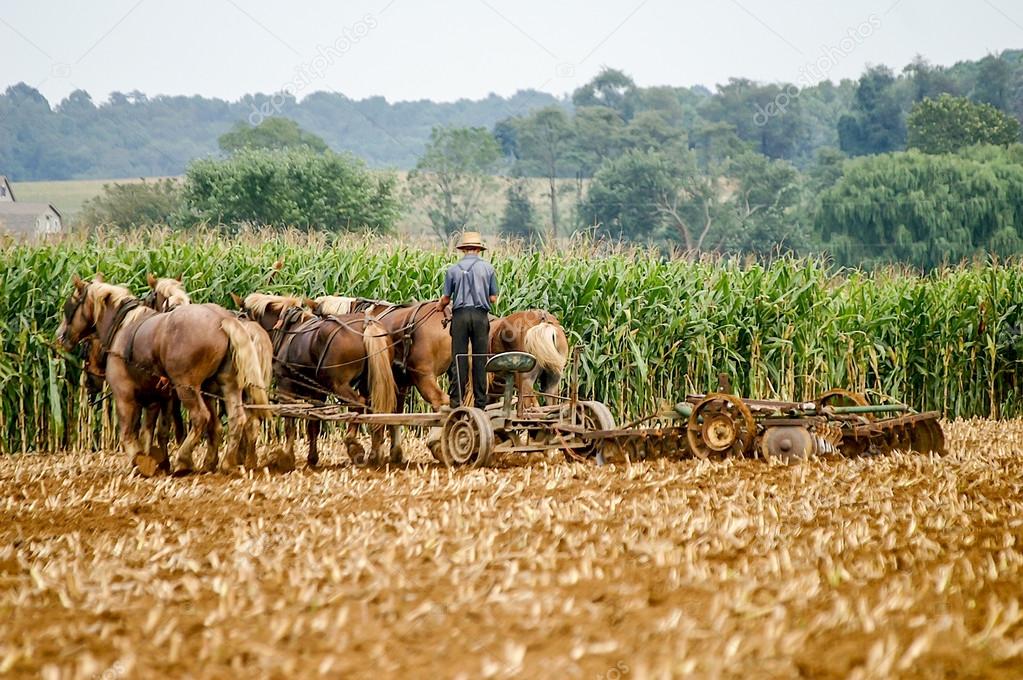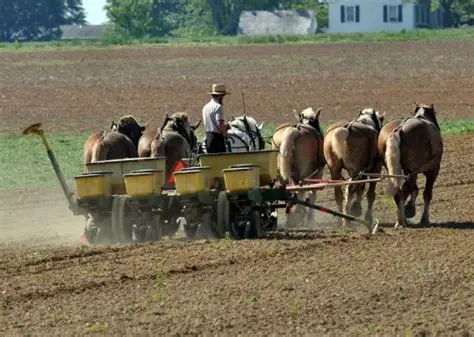Early Amish Farming Practices
Farming has always been central to Amish life, shaping their economy, culture, and community. From their early European roots to their settlement in North America, the Amish developed distinctive agricultural practices that reflected their values of simplicity, self-sufficiency, and cooperation. Understanding these practices provides insight into the resourcefulness and enduring traditions of Amish communities.
European Agricultural Roots
Before migrating to America, Amish families farmed in Switzerland, Alsace, and Germany. Farms were typically small, family-run operations focused on subsistence. Crops like wheat, rye, and barley were common, while livestock included cows, pigs, and chickens.
Limited land and harsh European climates required careful planning and cooperative labor. Families worked together, passing down farming knowledge and techniques through generations. These early experiences influenced Amish farming methods in America.
Adaptation in Pennsylvania
When the Amish settled in Pennsylvania in the 18th century, they adapted European farming methods to the New World. Fertile soil and abundant land allowed families to expand crop production while continuing to prioritize self-sufficiency.
Amish farmers planted corn, wheat, oats, and vegetables, maintaining livestock for milk, meat, and labor. They relied on hand tools, plows, and horse-drawn equipment, avoiding motorized machinery to preserve simplicity and community focus.
Crop Rotation and Soil Management
Early Amish farmers practiced crop rotation to maintain soil fertility and prevent erosion. Fields were divided into sections for different crops each year, balancing nutrients and reducing pests.
Livestock manure served as natural fertilizer, reflecting the Amish commitment to sustainable, chemical-free farming. These methods ensured long-term productivity while aligning with environmental stewardship and traditional practices.
Livestock and Animal Husbandry
Livestock was essential to early Amish farms. Cows provided milk for cheese and butter, pigs supplied meat, and chickens contributed eggs and poultry products. Horses and oxen were primary work animals, pulling plows, wagons, and farm equipment.
Careful breeding and animal husbandry ensured healthy herds, while shared knowledge among community members helped maintain strong, productive livestock populations. Animal care reinforced cooperation and collective responsibility.
Cooperative Farming and Community Support
Amish farming thrived on cooperation. Neighbors assisted one another with large projects such as barn raisings, planting, and harvesting. These collaborative efforts not only increased efficiency but also strengthened social bonds.
Barn raisings became significant cultural events, demonstrating teamwork, skill-sharing, and communal solidarity. Cooperation allowed small farms to succeed without relying on modern machinery, emphasizing values over convenience.
Preservation of Traditional Techniques
Despite advances in agriculture elsewhere, Amish communities have preserved many early farming practices. Hand tools, horse-drawn plows, and non-electric equipment remain common in conservative settlements.
Techniques like crop rotation, organic fertilization, and manual harvesting reflect a commitment to sustainability, practicality, and cultural identity. These practices continue to pass from generation to generation, ensuring continuity of heritage.

Lessons from Early Amish Farming
Early Amish farming practices illustrate the importance of resilience, planning, and community support. By relying on sustainable methods and cooperation, Amish farmers created productive farms while maintaining cultural values.
Modern observers can learn from these practices, appreciating the balance of efficiency, sustainability, and ethical living. Amish farms exemplify how traditional methods can thrive alongside cultural preservation.
Conclusion
Early Amish farming practices were shaped by European experience, adaptation to American landscapes, and a commitment to faith, family, and community. Techniques like crop rotation, animal husbandry, and cooperative labor allowed farms to thrive without modern machinery. By preserving these practices, Amish communities maintain a connection to their past while ensuring sustainable, self-sufficient livelihoods. Observing Amish farming today provides a window into a way of life rooted in simplicity, tradition, and collective effort.



